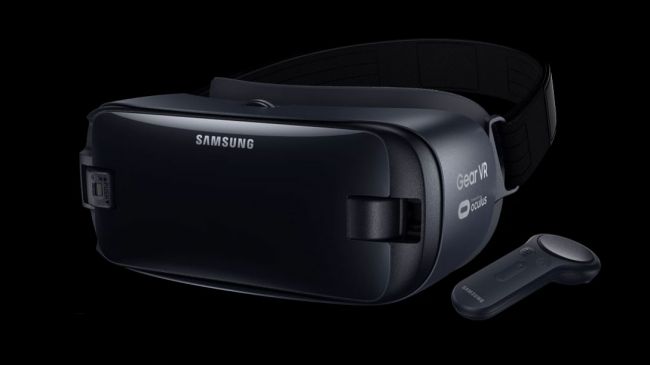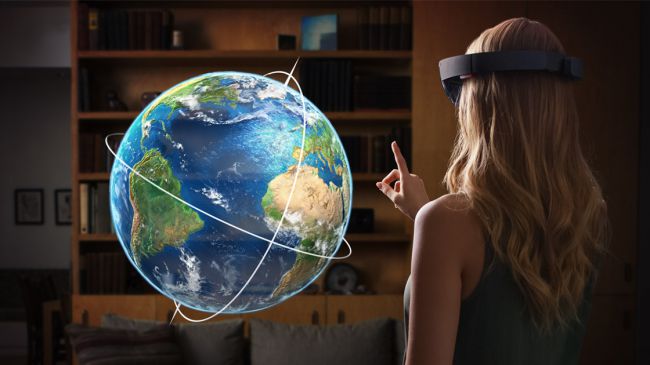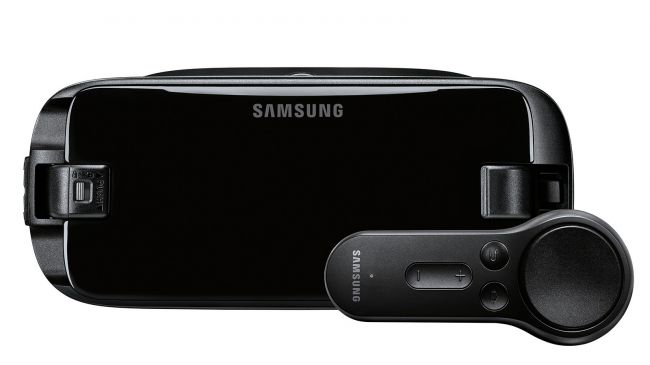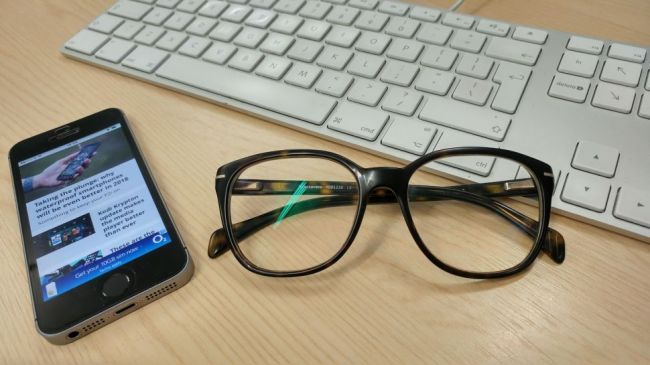Samsung has been in the virtual reality (VR) game for some time now thanks to its partnership with Oculus for the Samsung Gear VR headset, but it looks like the tech giant could be preparing to launch a new wireless headset that uses both augmented reality (AR) and VR technology.
The news is interesting for a few reasons. While VR headsets have become a lot more common over the past few years, to date AR has largely been limited to apps on our phones.
AR headsets have been released – including the likes of Google Glass and Microsoft HoloLens – but these remain largely out of consumer consciousness.
There are a few major differences between the rumored AR/VR headset and Samsung’s already-released Gear VR headset.
The Gear VR is made strictly for VR, meaning it blocks out the entire outside world and instead displays a new, virtual reality. AR, on the other hand, involves being able to see the outside world and displaying virtual elements over the top of it.

If Samsung does launch an AR headset, it could change the tech world forever. AR is considered by many to be the next big thing in tech – and could even replace the smartphone.
Of course, Samsung may have some serious competition. A long time rival has been rumored to be working on its own AR/VR reality headset.
We’re talking about the rumored Apple VR headset with AR capabilities, and if the products are launched at the same time, it could mean all-out war in the AR/VR space. That’s a good thing for consumers, however, as it will lead to more innovation and more choice.
But what will Samsung’s new AR/VR device look like? And how much will it cost? Here’s everything we know about it so far.
Cut to the chase
- What is it? A wireless headset from Samsung capable of both VR and AR
- When is it out? No official word yet, though it could be announced at IFA 2018 in September
- How much does it cost? No official word yet
Release date
Samsung’s AR/VR headset may be well and truly on its way.
Rumors indicate that Samsung may be planning on launching the headset as soon as September, at IFA 2018 in Berlin.

Of course, just because it announces the headset at IFA doesn’t mean that it’ll be available in September of this year. Still, we expect that if it’s not available as soon as announced, it will instead be available within a year of its reveal.
That is, if Samsung announces it at IFA 2018. It could still be a year or more off before Samsung lifts the lid on this mysterious AR/VR device, though of course, that’s just our speculation.
Price
In addition to when the headset might release, one major unknown is exactly how much the headset will cost. Like the Samsung AR/VR headset release date, price is likely to remain unknown for the time being.
We can, however, look at the pricing of other products to get a general idea of how much it could potentially cost.
The Samsung Gear VR comes in at $129 in the US, but you need a compatible Samsung phone to use with it. The standalone Oculus Go is perhaps a more appropriate comparison, and it’s priced at $200 / £200 / AU$300, or $250 / £250 / AU$370 for a version with more storage.

Other augmented reality headsets, however, are a little pricier. There’s the Microsoft HoloLens, which comes at a hefty $3,000 (£2,719 / AU$4,369), but there’s also a HP mixed reality headset that features Microsoft software and runs for $300 and requires a decently powerful computer to connect to.
Last but not least is Samsung HMD Odyssey, a mixed reality headset that comes at $500 and features the Windows Mixed Reality platform.
We expect the new Samsung product to be decently accessible to most people, so it probably won’t run for more than $500. Still, that’s just speculation – it could end up being far more or far less.
What will it be like?
Rumors indicate that the new Samsung AR/VR headset will be a little different than other offerings, in that it will be wireless, and won’t require a phone to work.
In other words, it’ll be a completely self-contained headset that runs using Samsung’s own self-built chips.
It’ll also make use of Samsung’s OLED displays – which means the AR portion of the headset may actually involve a camera displaying the outside world on a screen rather than digital elements being projected onto glass.
That would also help with the VR aspect. It’s important to remember that the headset is supposed to combine AR and VR, and when the headset is being used for VR, it’ll need to be able to block out the outside world.
Considering this, it’s looking like Samsung’s new headset won’t be the smart glasses we’ve been holding out for.

One key thing to note about this headset is that Samsung is building it in partnership with Microsoft.
What that means is that the hardware is likely to be Samsung-built, while the software will most likely be some form of Windows Mixed Reality.
We’ll have to wait and see if it’s the same software that’s on other Windows Mixed Reality headsets, or a tweaked version of the software.
Another important thing to note is that the headset is rumored to be wireless, and won’t require connection to a computer or phone. What that means is that it’ll be among the first truly mobile augmented reality devices built for consumers.
It’s possible the new headset could be similar to the Samsung HMD Odyssey, an existing Samsung-made Windows Mixed Reality headset. We’re hoping, however, that it’s a totally new product.
Will it be like Apple’s VR headset?
Samsung isn’t the only company working on an AR headset. Apple has been rumored to be working on AR Glasses for some time now, while new rumors have cropped up that Apple is making an AR/VR headset, though it’s not clear if this is in addition to its AR glasses, or a replacement for it.
While the two rivals headsets could both features AR and VR capabilities, there will be some major differences between the two products. For starters, the operating system will be different.
Apple is likely building its own operating system for its rumored product, while Samsung, through its partnership with Microsoft, will most likely be using Windows-based software for the headset.

Apart from that, we expect both products to be wireless, standalone devices, and we expect them both to be targeted towards consumers.
There may be an emphasis on design as a way to entice customers to wear the product more often as they go about their daily lives – especially for Apple.
Rumors give us an idea about what Samsung’s new AR/VR headset could end up looking like, but there’s still a lot we don’t know. Will this be the product to push augmented reality to the average consumer while at the same time shaking up the VR industry? We’ll have to wait and see.
This article was originally published by TechRadar.

